Tutorials
Jack’s Joggers With Expandable Cuffs Create Sustainable Sewing
When I learned to sew for my daughter in the late 80’s, we made woven cotton dresses. Since children often grow more vertically than horizontally, we put deep hems in those little dresses, so they could be let out lest their panties show. Times have changed, and we now have the wonder of knits, and the magic of Lycra. I put a lot of effort and love into a little Corgi print Muse last year. The footie expansion is genius to keep those toes warm.
Sadly, she out grew it and it was passed on to a friend in a garbage bag full of 12 month clothing, a lot of it was made by me. The plan was for the friend to gift them round the circle of friends as a community clothing bank. Brilliant idea, right? In a stroke of really bad luck one husband who must not be named mistook the garbage bag of 12 month togs as actual garbage. The pain is real. To cope with this, I searched for ideas to make clothing for my grand daughter that would last longer than one season, and did some experimenting.
Deep hems, could translate to deep cuffs, right? I have seen other patterns with “Grow with me” options, and decided that I live a tad more sustainably and use a pattern I already had. Since my model is currently cloth diapered, I cut the next size Jack’s Joggers. Cut the inseam at her current inseam length, and added cuffs. Serious cuffs. I am a cut the cuffs first kind of sewist, so I cut a 13 inch stripe by hand with scissors across the width of this stripe I purchased from Stitch Upon a Time. Used the chart that is so handily printed on the pattern to cut the widths of my cuffs and waistband. If you are making a smaller size, you may want to use a shorter cuff. I cut the cuff so the light stripe was at either end. This makes the cuff the same from either side. This will be important later. I had just enough of this strip left over to make the yoke and cuffs of a mini Merryweather, pictured at the end of this post. Be sure to use a light weight fabric with good recovery on those cuffs. Interlock is fine for the body of the pants, but the recovery found with Lycra makes all the difference in bands, cuffs and waistbands.
Cut Cuffs and Waistband
Cut the Joggers. I cut this fabric, as the wearer really likes cars.
Stitch long tubes for the leg cuffs. And a wider tube for the waist band. This waistband has been sewn and basted round the edges. Similar to a yoga waistband. These can be serged, or machine stitched. I like to use either a triple stitch or a short narrow zig zag. A machine sewn cuff generally has less bulk than a serged cuff. Take some effort to match your stripes. Do you see the curling happening on the left cuff. These were cut straight, but the fabric tends to curl a bit. We have that covered!
Fold up the tube that makes the cuff. Clip at the seam and center.
Control the roll. Since I am on a sustainable journey, I trimmed the fabric at the cut edge to get a straight stripe. I could have cut off an inch and eliminated the roll. I used the power of basting to control that roll. Basting takes a few minutes, sure, and can save a lot more than that in ripping. Go Team Baste, and baste the raw edges of the cuff together with a short wide zig zag. I used an overcast foot which allows me to sew at the edge of the fabric. There is a small finger underneath the foot that holds the fabric flat till it has passed through. It eliminates tunneling of stitches. Hand walk the first few stitches so you are sure the needle clears all the metal parts of the foot with each swing. Start the baste in between two clips. Wonder if this foot would help with twin needle tunneling? Another experiment in the queue!
Complete the circle. if you can manage a wide enough stitch, but one that is close to the edge, the basting stitches do not need to be removed. Sew slowly and unroll the fabric edge as you go, like a cow catcher on a steam engine. Or pilot. You can use a tool to help here as well. Use this process on both cuffs and waistband. Mark the centers of the leg cuffs, and quarter marks of the waist band. Set them aside.
Stitch the inseam of the pants. With right sides together, stitch the inseams. Some folks like to sew the crotch seams first. Either works.
Sew the Crotch Curve. The best way to do this is to turn one leg right side out and slip that into the other leg. With fabrics right sides together, align and clip the top front, back and inseams. In the old days, we would reinforce that seam with a stretch stitch on the regular machine. Not sure if that is necessary now.
Slip the cuff over one the leg of pant. I like to match the cuff seam to the center of the outside of the pant leg and the center of the cuff to the inseam of the pant in my ongoing efforts to reduce the bulk.
Clip the center of the cuff to the inseam of the pant, and the center of the pant to the seam of the cuff.
Sew the cuff to the pant leg. Use a stretch stitch or serger and starting between the clips sew around the circle. This is sewn with the cuff up. Repeat on the other leg.
Stitch the waistband on too! Quarter marked waist band is clipped to quarter marked pants, start between the clips and serge or sew with a stretchy stitch. Since the waist band had been “roll controlled” with a wide basting stitch, it was really a well behaved piece of fabric, so I allowed it to go on the bottom against the feed dogs, while I supervised the top layer of pants, that wanted to roll just a bit.
And boom, you are done! Roll down the cuff and waistband once.
Or roll them twice. Either way you will have a comfy pair of pants that will last longer than one season.
Long enough to become old favorites!
Next time – Color block a matching top! This was made with Merryweather and Neverland. More info here: https://joaninstitches.blog/2021/01/03/mini-merryweather-modification/
Wishing you happy sewing! Joan

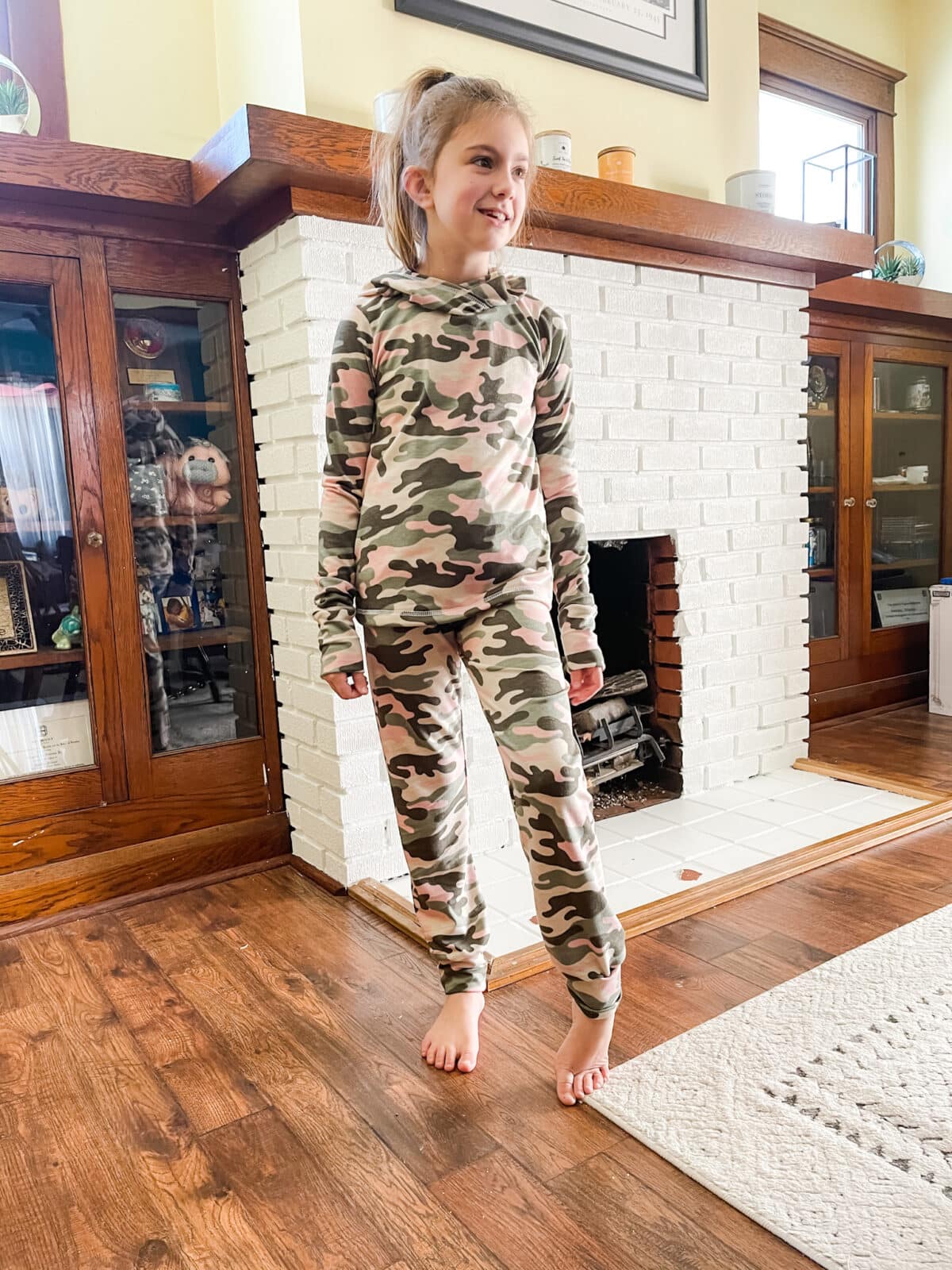
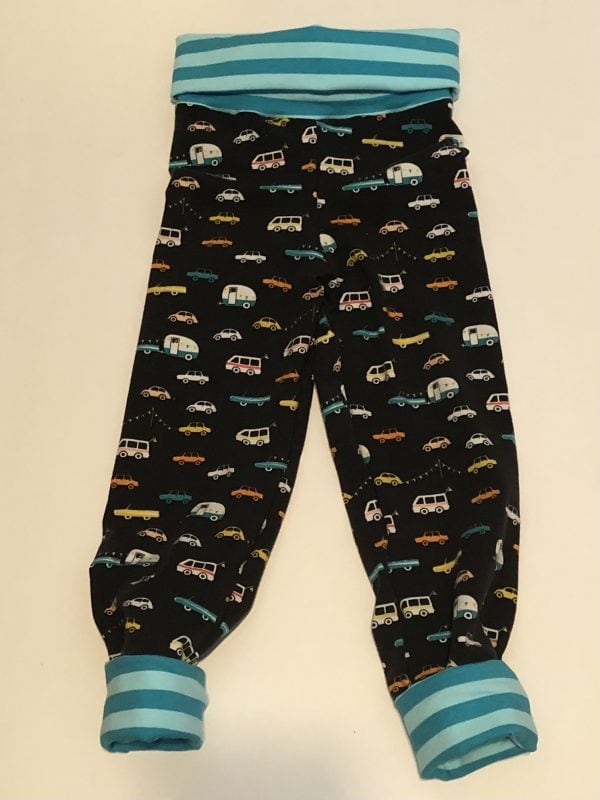
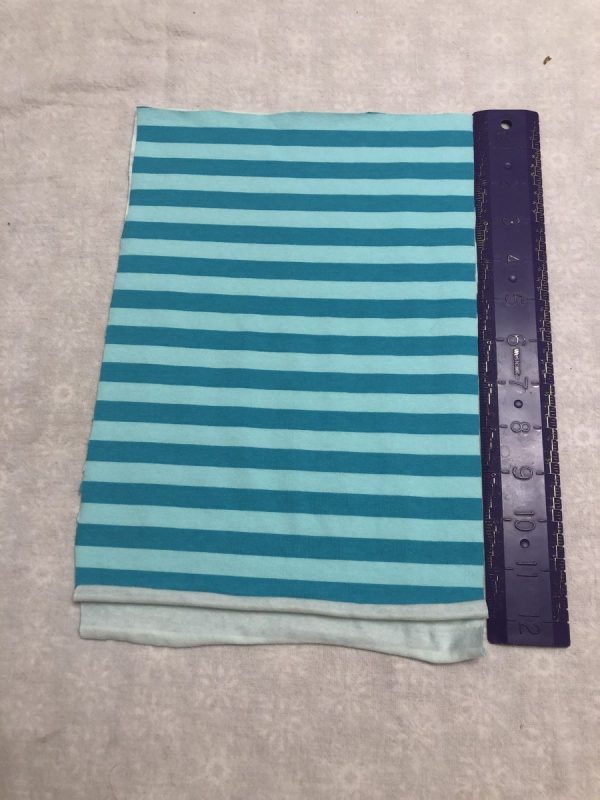
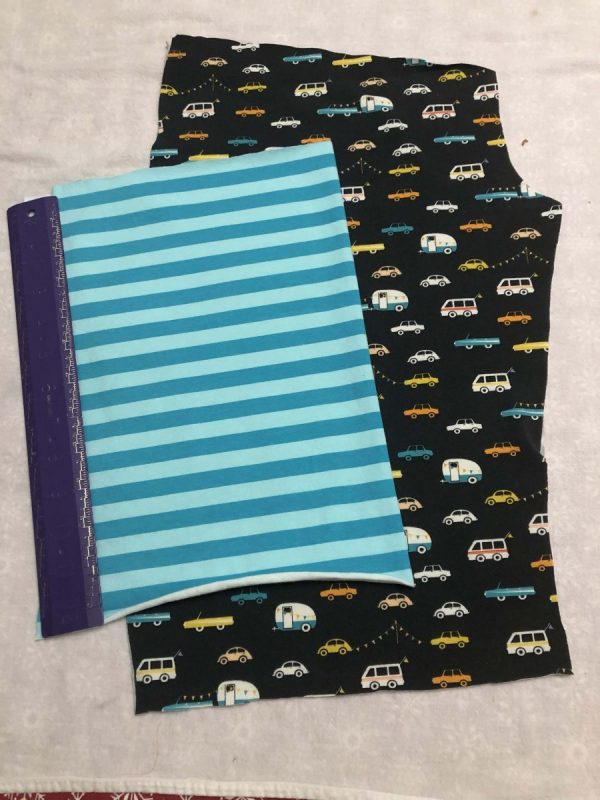
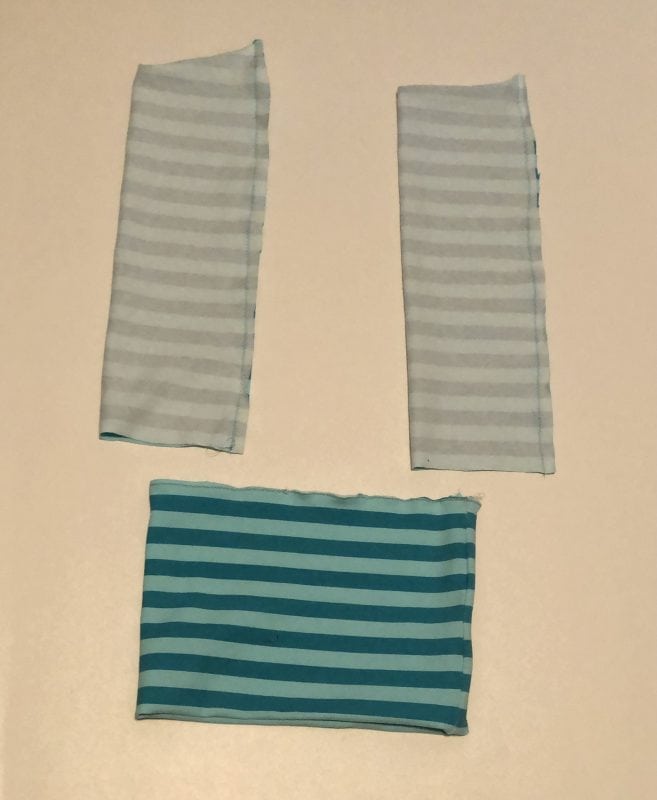
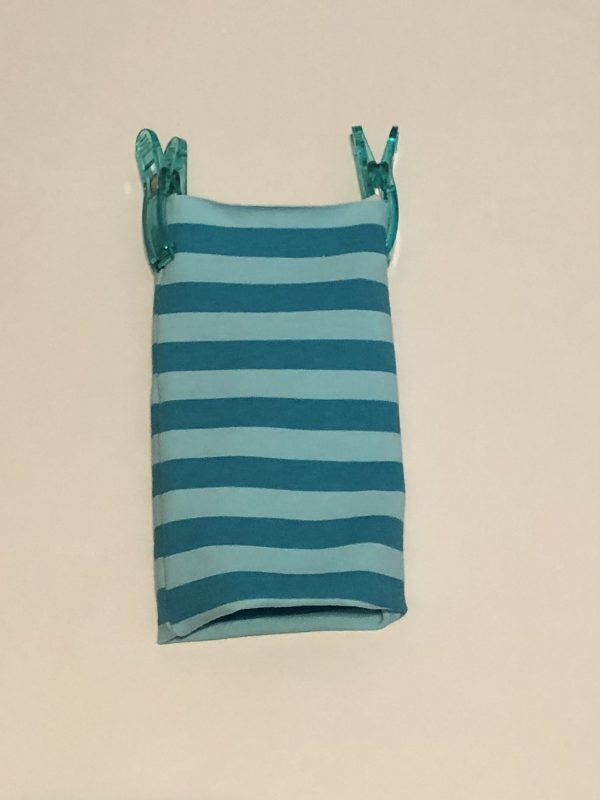
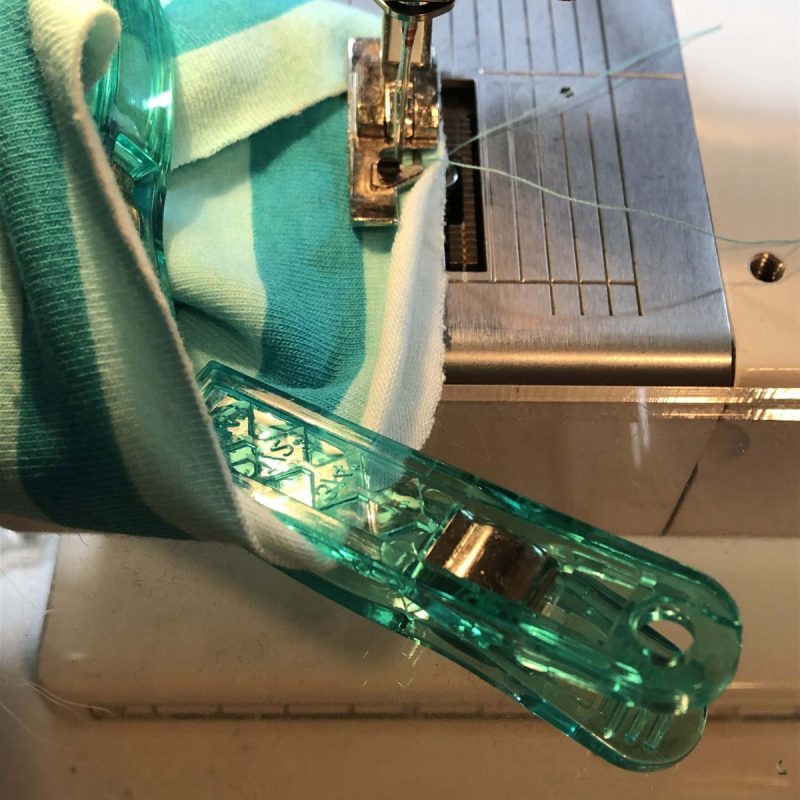
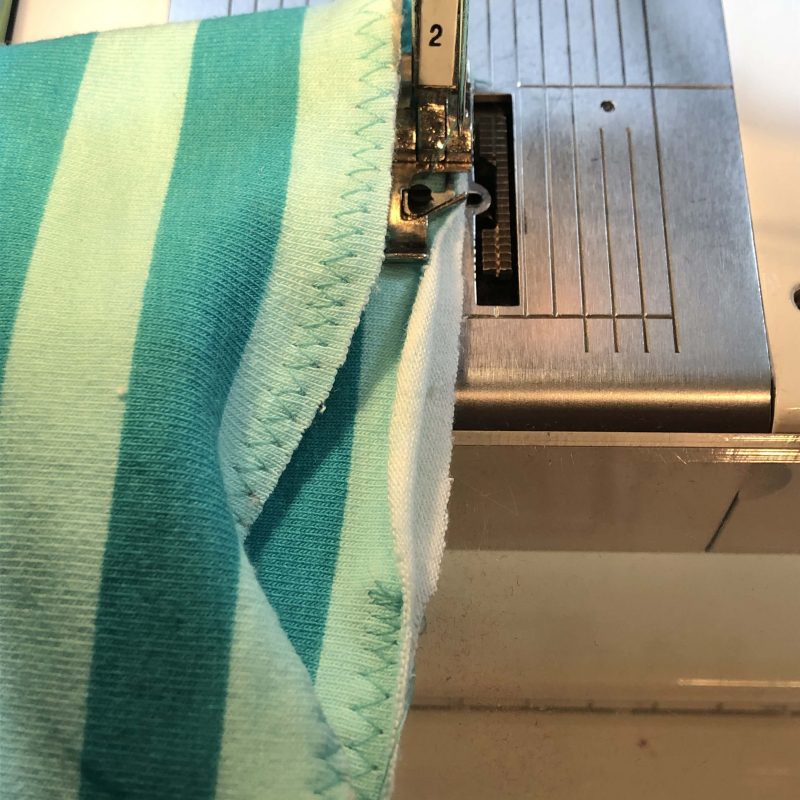
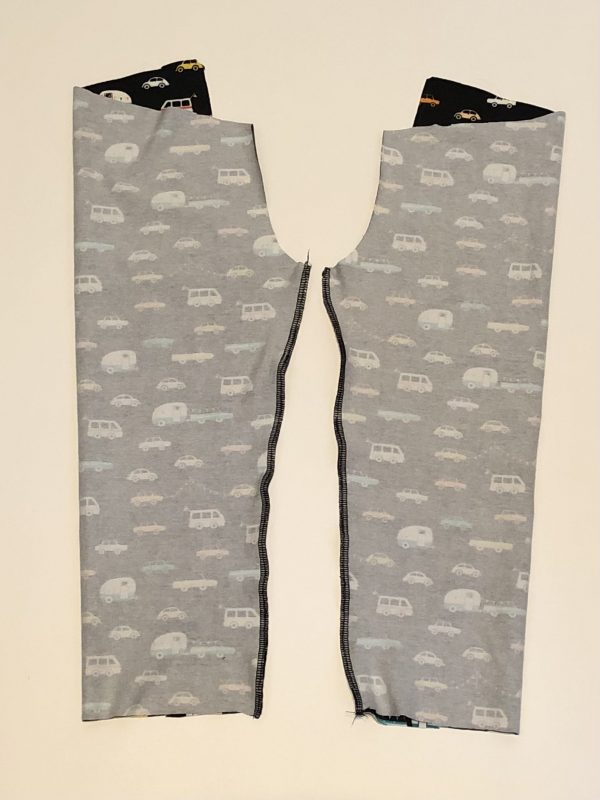
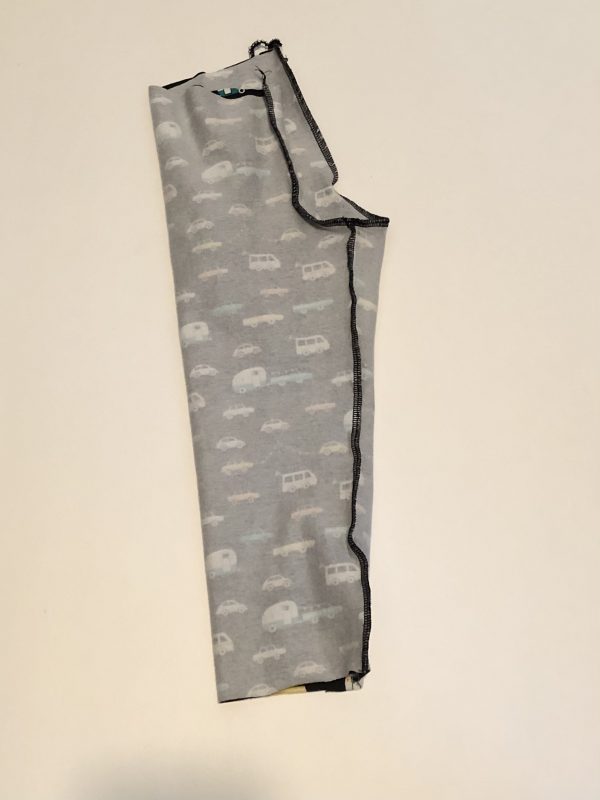
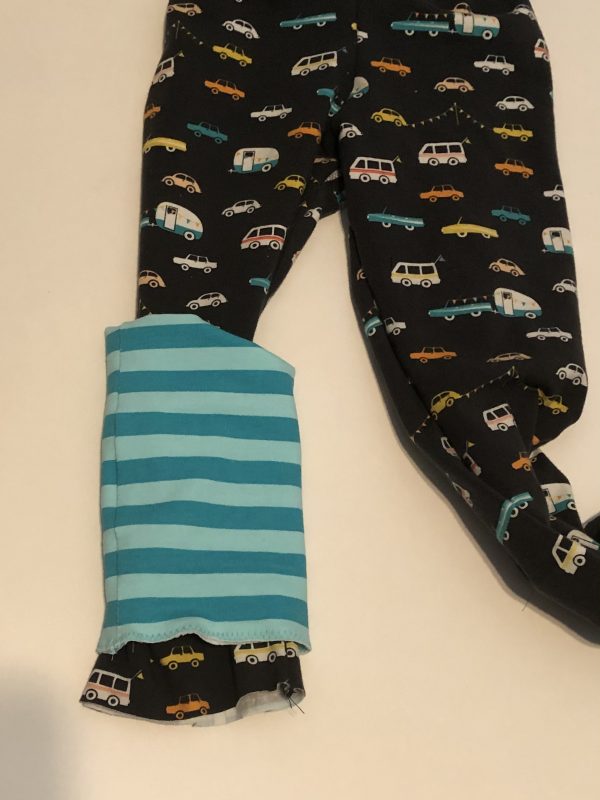
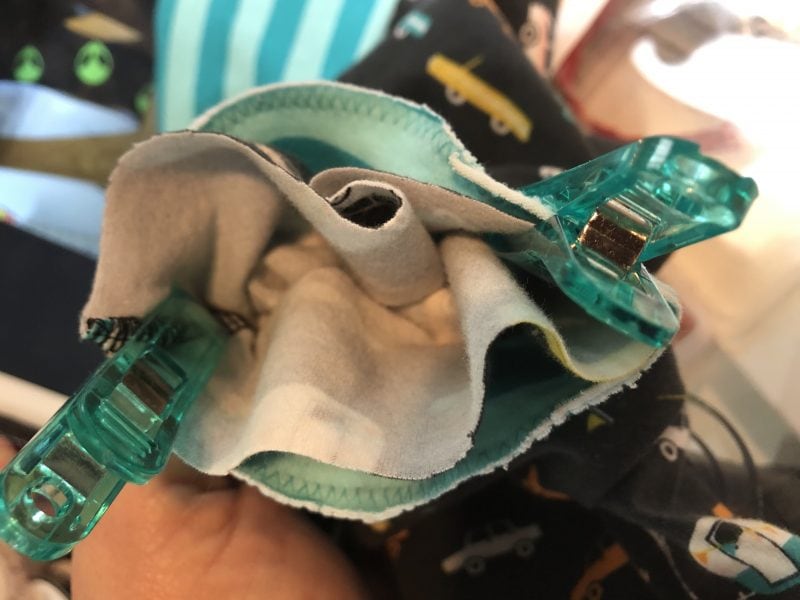
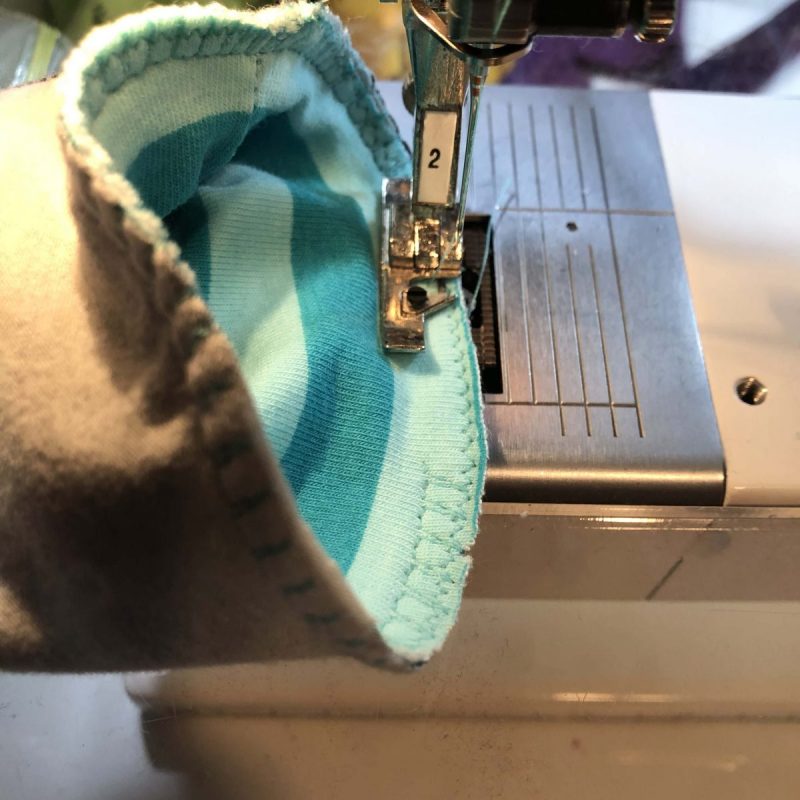
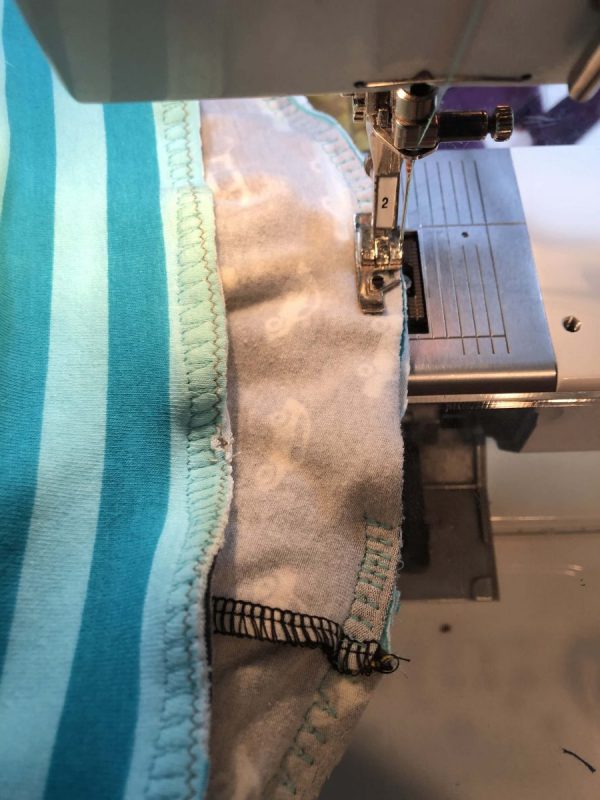
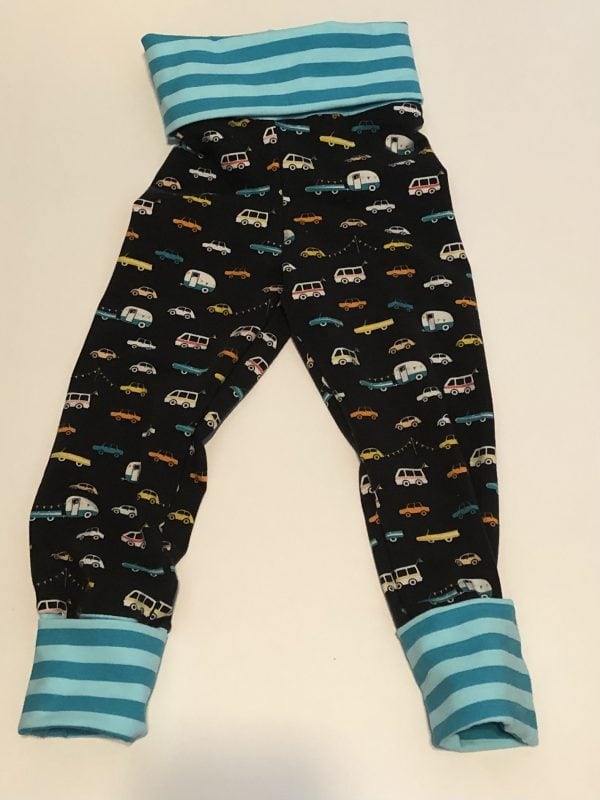
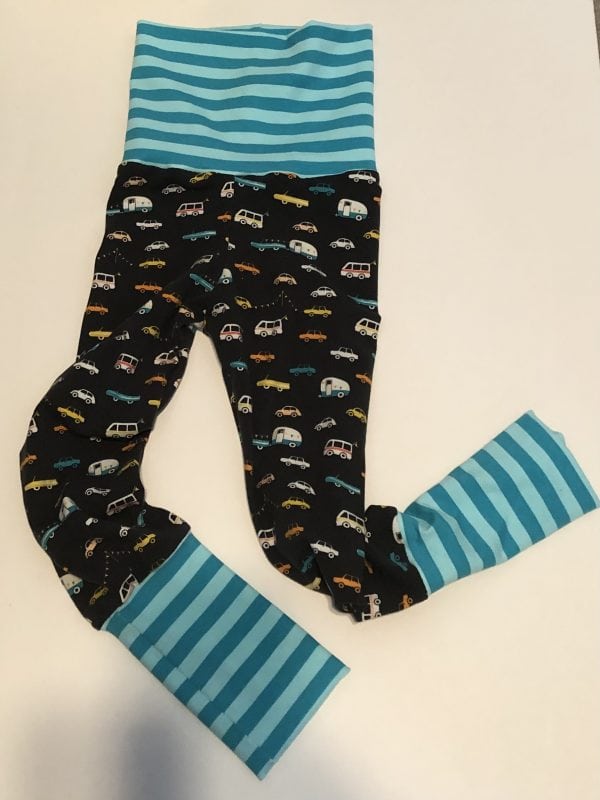
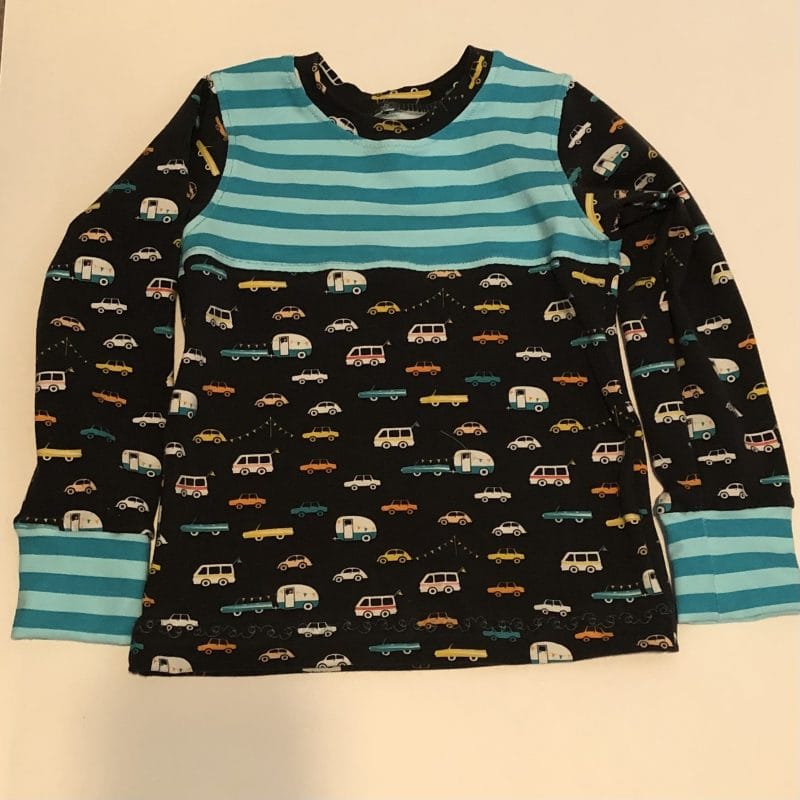
So I think cloth TP is in the American future how about a easy pattern/ diapers too